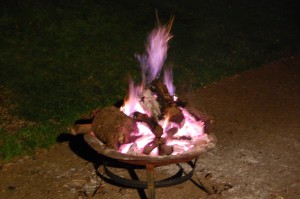 Healing with and from Our Families
Healing with and from Our Families
Today’s weather was beautiful. We spent a lot of it outside or at least on the porch. We made plans. We made a little art. In the late afternoon my husband built a fire. We roasted hot dogs for dinner. My daughter and her friend ate in the tree house. I walked down to the river. Just after sunset we watched a fantastically fat and yellow moon rise up out of the trees in the backyard to take its place among the stars.
Sounds idyllic.
But of course there’s always more to the story.
Fussing, whining, laughing, tears, yelling, longing, work, doubt, love, grief. They were also part of the story today.
Untold parts of every family story. Every day.
+++++++++++++++++
This week’s Hebrew Bible lectionary text is the beginning story of one of the most famous families in the Bible.
Sarah. Abraham. Lot. Hagar. Isaac. Ishmael.
The early days.
They spent a lot of time outside. After they left Abram’s father’s house, and before their names were changed, and they became a great and blessed nation, there was a lot of down time. And they found themselves wandering around the backside of nowhere. Must have been a lot of cooking over open fires, watching big moons rise over distant trees and rocks. A lot of walking. And in the mean time God promises:
“I will make of you a great nation, and I will bless you, and make your name great, so that you will be a blessing. I will bless those who bless you, and the one who curses you I will curse; and in you all the families of the earth shall be blessed.”
Sounds idyllic.
But of course there’s always more to the story.
Leaving your father’s house. Wandering around in the wilderness. Long seasons of insecurity. Entertaining strangers (with no tree house in sight), who turn out to be the LORD in disguise (aren’t they always?). Fights. Lying. Sacrifice. Laughing. Turning to salt. Nearly dying of thirst. Hearing that you are a conduit of blessing for every family on the earth, more numerous than the stars in the sky. Work, doubt, love, grief.
Untold parts of every family story. Every day.
As I stood by the fire this evening and looked up at the moon, now high in the sky, I wondered. I wondered at the miracle that Abraham and Sarah looked up at the very same moon. I marveled at how families are both a source of our greatest neurosis, deepest disappointment, many pains and doubts, and at the same time they are also the fountain of joy, laughter, healing and blessing. And how hard it is to see all of this honestly.
++++++++++++++++
A few years ago U2’s lead singer Bono left his father’s house for the last time. His Dad died, and as Bono put it, left him his voice. His dad was a postal employee by day and opera singer by night. Bono’s own voice he thinks came from his dad. So Bono put some of his grief into a song. He sang that song at his Dad’s funeral.
As a rock star and social activist, Bono’s life looks fairly idyllic when you first consider it . . . but he’s like all the rest of us. The same moon rises over his head tonight, and the fires burn in him like the rest of us. His work, doubt, love, and grief are just as poignant. He also makes some art. And lucky for us he shares his art and his grief occasionally in beautiful songs. Part of what is great about his lyrics (and the music they ride on) is the possibility of multiple meanings that he layers in through a powerful use of words and images. I wonder at the beauty of these gifts.
In this song, Bono captures some of the relational complexity of families. They can be a source of disappointment and pain, but also a source of healing and blessing.
Watch the video of “Sometimes you can’t make it on your own” here.
There are untold parts of every family story. Every day.
Here’s a glimpse into one story.
As you listen and watch may it connect you with and to your own work, doubt, love, and grief.
Reminder:
For Lent, I’m focusing on a different sort of meditation. Rather than “give something up” to help me with prayer and renewal, this year I’m in search of healing by means of a new practice. In most of this year’s Lenten posts, I will focus on a brief video with commentary which connects to themes of healing and/or scripture texts for the week.
The practice could be considered a pop-culture version of visio divina – divine viewing. It is somewhat like lectio divina – divine reading – which may be more familiar. The latter is a slow purposeful reading of a brief text – usually Scripture. The newer visio divina grows out of lectio divina and is a conversation between scripture text and artistic text.



